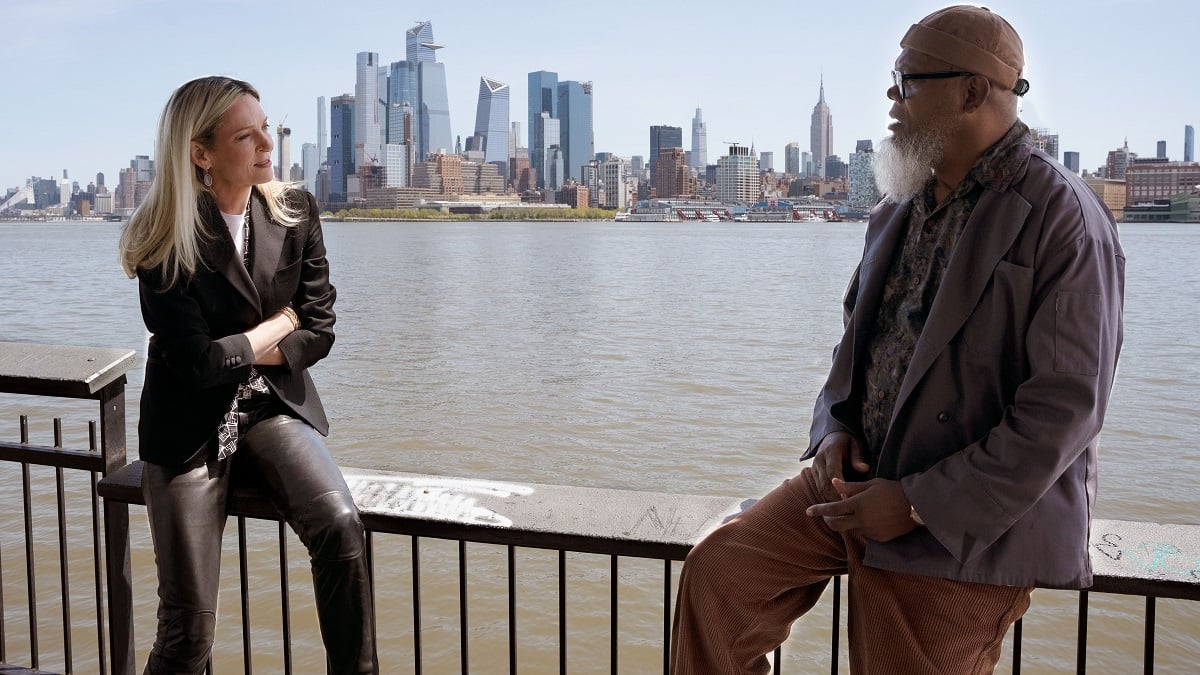The art world is an easy target for mockery, but things take a decidedly more dangerous and deadly turn for the characters in director Nicol Paone’s The Kill Room, which premieres in theaters this coming Friday, Sept. 29.
Star and producer Uma Thurman’s art dealer Patrice enters into a shady agreement with Samuel L. Jackson’s criminal Gordon to concoct a money-laundering scheme designed to get everybody rich quick. An unexpected side effect is that Joe Mangeniello’s hitman accidentally becomes an avant-garde sensation thanks to his paintings, leading to the art world being pitted against the underworld.
As a result, the popularity and high demand for new work from elusive newcomer “The Bagman” threatens to blow a hole in not just their cover, but an operation that was supposed to be kept quiet. Also starring Maya Hawke, Debi Mazar, and Larry Pine to name but three, Paone’s second feature after 2020 comedy Friendsgiving toes the line between several different genres at once, excelling at them all.
Ahead of the film’s release, We Got This Covered had the chance to speak to Paone about her latest effort from behind the camera. During our chat, we cover the tonal tightrope The Kill Room walks, poking fun at the art world, shooting on location in places the filmmaker knows very well, bananas wrapped in electrical tape, Wonder Woman 3, and much more, which you can check out below.
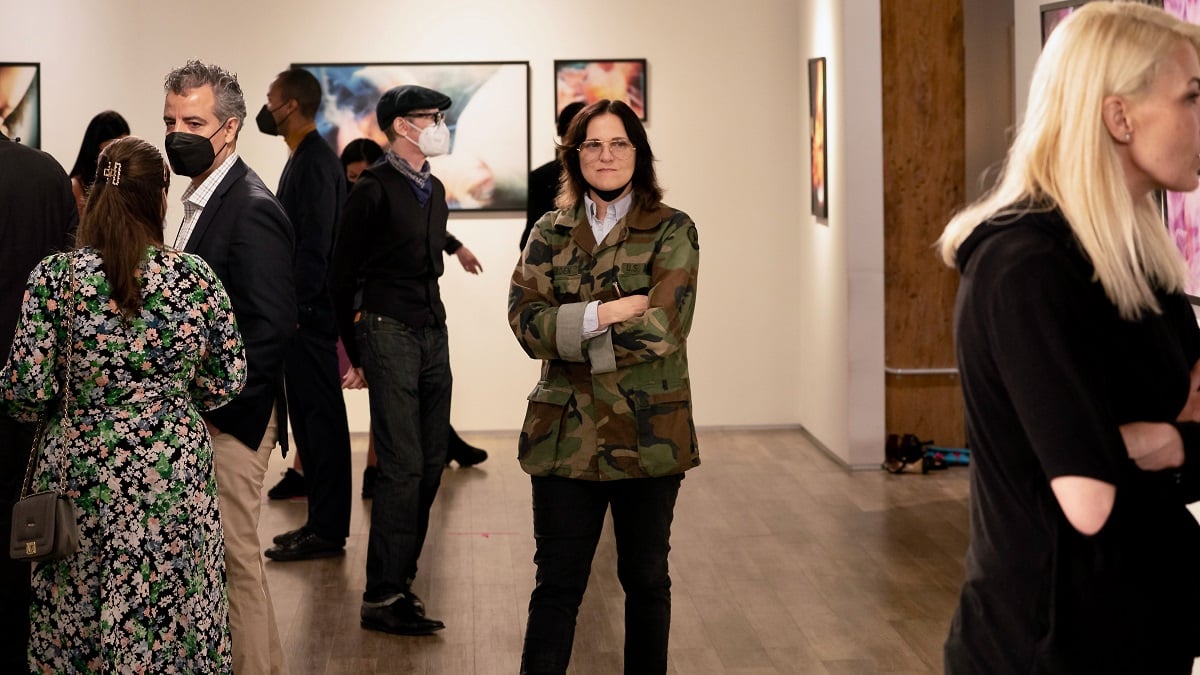
It’s been a year and a half since The Kill Room was first announced and close to a year since you wrapped, but how does it feel know knowing your movie is almost ready for release?
Nicol Paone: Hmm, great question. I feel wonderful. I got enough rest and recovery from a shoot that was quite difficult. We had a lot of a lot of things changing at the last minute, we had to completely rewrite the ending, and redo bunch of reshoots.
And I know every movie has that, but this one was particularly fraught, with every possible thing that could go wrong did. And so it was it was challenging, but after looking at the movie, and the job that we did and had to do, I feel great. I’m proud of the movie. And, and of course, I see certain things that I would change. But that’s art.
Someone once said a director is never truly finished with a film, there just comes a point where they have to hand it over, which sounds like something you wholeheartedly agree with?
Nicol Paone: 100 percent. Like, as a person, you’re always growing and learning about yourself. And so that informs your art in a different way. And then, I don’t know how it’s possible for someone to watch a film that they made, say years ago, and go like, “Yeah, that’s good.” Unless, I mean, I don’t know, unless it’s like Pulp Fiction. I don’t know, I think people would always want to change because they change.
Your background is largely in comedy, and while there are definitely comedic elements to The Kill Room, it’s got plenty of other genre influences as well, so were you always keen to broaden your horizons sooner rather than later to add more strings to your bow, or was it more a case of this being the right project at the right time that spoke to your sensibilities?
Nicol Paone: Yeah, I think it’s a little bit of both, right? Like, I always want to grow and learn and evolve, humor will always be a part of anything that I do. But I thought The Kill Room walked the line perfectly in sending up the art world in a fun way, while providing some thrilling moments, and some much needed comedy. I personally believe I’m going more towards that direction, than just like straight up comedies.
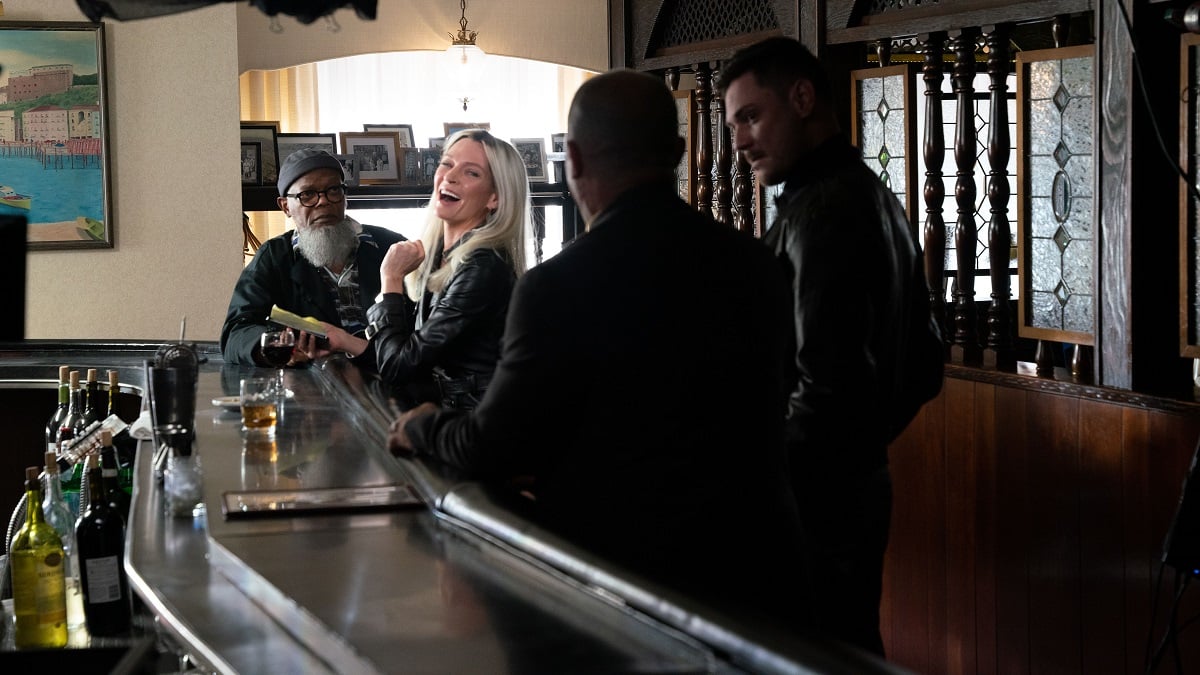
You’ve got an extensive background as a writer and you wrote your first feature Friendsgiving as well, but you didn’t write the screenplay for this one, so did that alter your approach at all in terms of your process translating things from page to screen if only because it’s a different method of actualizing somebody else’s ideas as opposed to ones you’ve created yourself?
Nicol Paone: Definitely. So I worked on Friendsgiving, my first movie, I worked with Nicholas Weinstock and Ben Stiller, and they are really heavy on the developmental process. And I’ve learned a lot from them about story turns and character arcs. And, you know, if you take a look at The Kill Room, every character has an arc or a need or a want, and they’re not just servicing the the main characters, and that was important to me.
And every time a character is on screen, you you don’t want them just to be like the handyman of the movie, you know, and I don’t think they are. I think they all have great little storylines, for the better of the movie, really. And so I think The Kill Room took all of my strengths in character development that I learned at the Groundlings and, and working with Jonathan Jacobson, who wrote such a lovely script.
I was, you know, guiding him just towards showing a little bit more than telling, and I think he did an incredible job on the script. And it was a great collaboration, when you write and direct, you’re kind of just in your head as both. But to have the writer present, and you know, if I needed a scene, I would sort of just call him if he wasn’t on set and say like, “We need this or we need that.” And for him to go off and do it, and do it so brilliantly, was was really wonderful, I thought.
A black comedy crime thriller that’s got these hints of absurdism and then the occasional burst of ultra-violence, all set within a niche world that’s been picked apart throughout isn’t an easy tonal balance to strike, but was walking that tightrope something you were always cognizant of on set and in post to always ensure that no one element ended up overpowering the others?
Nicol Paone: Yeah, it was a difficult tightrope. I wouldn’t say I was walking sort of like, carefully or scared, I wanted whatever element spoke to the moment, that was what had to lead. But the other elements or aspects, say humor; if it was a moment when Joe is killing someone, obviously, we’re not going to make that funny in any way.
But we kind of did a little bit with like, the blood in the bag and those things, humor couldn’t overpower those moments. And so I really just tried to stay focused on each moment, and have the element of the moment speak to how we were shooting and what sort of led, but it wasn’t a careful or scared decision. It was like, “Okay, well, where are we now and what just happened, and let’s go for it, all-in.”
And hopefully, it’ll all balance out. And I think in the editing room, you know, that’s when a lot of the decisions were made. And I had a brilliant editor [Gillian Hutshing], and she and I were able to walk the line, mostly in the editing room.
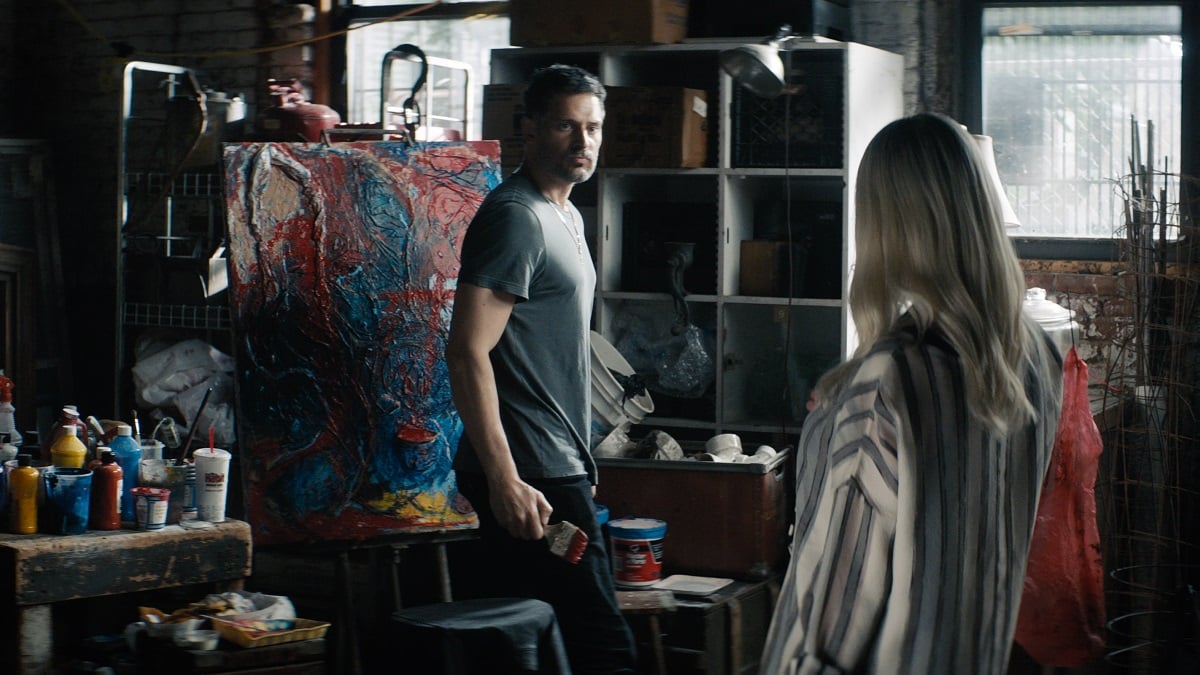
The art scene and its associated veneer of pretension is an easy target that’s been taken down plenty of times before, but tying it to a criminal enterprise freshens it up in The Kill Room, so were you always trying to maintain that balance of walking over ground that’s obviously well-trodden in terms of being mocked and satirized, but grounding it in a way that makes sense with the context of the film?
Nicol Paone: Well, Jonathan, he actually read an article about a sort of mishap at Art Basel, where this woman was stabbed, and she was walking around with blood on her shirt, and people thought it was an art piece. Like, no one helped this woman for a while. And that’s what gave him the idea to write the script. And I fully think at some point or another, like The Kill Room in all of its absurdity it is just a film, but it’s not that far-fetched. That could happen, I think.
It reminded me of that viral picture when somebody put a random thing on the ground of an art exhibit, and then everybody gathered round and started taking pictures of it. It’s that sort of vibe, except more murderous.
Nicol Paone: Right, right. Yeah. In no way, in no world, is a banana with electrical tape worth $120,000. It just not. It’s, you know, come on.
You’ve got Maya Hawke working with Uma for the first time, and it would be fair to say that the dynamic is not what you’d call mother/daughter, which must have been a blast because Maya chews it up and spits it out any time she shows up onscreen?
Nicol Paone: Yeah, she’s brilliant. She, Maya is, I can’t believe she’s only 25 years old. She’s wise beyond her years, and she’s a brilliant actress, and she has such incredible pacing with her characters in the dialogue, and she’s incredibly present, and it was lovely to have her on set. It was adorable to watch, her and her mom together.
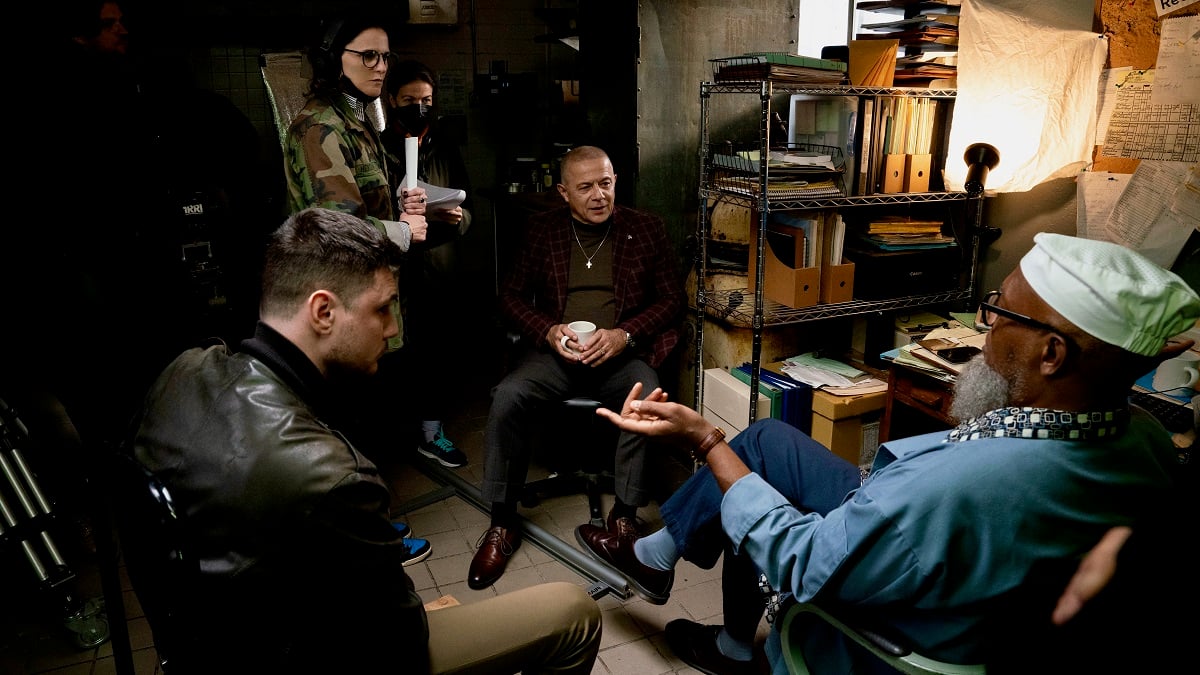
Even though you’re the director and the one marshaling everyone on set, what was it like for you as both a fan and a filmmaker to be on the set of your movie and hearing Samuel L. Jackson deploy his signature motherf*ckers?
Nicol Paone: It was an honor to be in a small room with Sam Jackson listening to him say MFer over and over. It was… I hope I’m like maybe one of 50 in the world, but who knows? Maybe, who knows how many of us there are. It was, you know, it was tough to step out of the moment and be the fan because when you’re in it, there’s so many levels and layers and things that need to be taken care of and addressed.
And so I just would be standing next to Sam and, you know, giving him a note or just discussing something, and once I stepped out I was kind of like, “Wow, this is Samuel L. Jackson.” And he’s just the loveliest man, and he’s a brilliant actor, and it was really just all about the work other the one time I was able to kind of bird’s eye view the whole thing. Yeah, the newbie filmmaker in myself, and the teenager in me, was really stoked.
You shot a lot on location in New Jersey, which was a homecoming of sorts for you. Was that always your intention from the second you signed on to set it there, because there’s an air of familiarity to the atmosphere that feels as though it was made by someone who knows those surroundings.
Nicol Paone: Yeah, so the film, actually the script, it was Brooklyn and Staten Island. But New Jersey has an incredible tax rate. And so our producers and I decided to toe the line. We shot a little bit in New York and mostly in New Jersey, and I thought, “Why are we trying to make New Jersey, New York? Why can’t they just be from New Jersey?” I’m from New Jersey, I know the place like the back of my hand, we’re shooting in New Jersey, like, the characters are not from New Jersey.
They’re very similar, like, there’s not much of a difference. Growing up in Lyndhurst, New Jersey, which is where we shot, and that Italian restaurant where they went to talk to Andre and Anton, that was a place that I frequented my whole life, like my parents went on two dates, the beginning dates there, you know. And so it’s a familiarity that I have, with the location and those types of characters, that I felt really comfortable directing this movie.
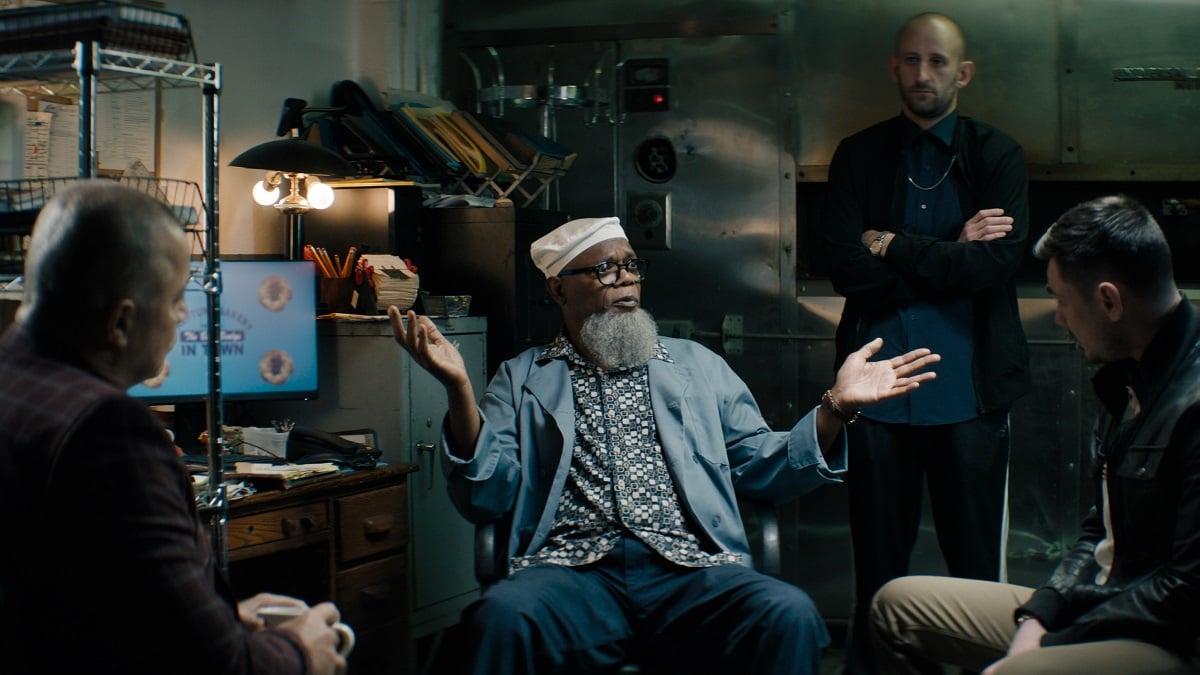
Now that The Kill Room has signaled a bit of a shift into new territory for you as a filmmaker with comedy, drama, a little bit of action and thrills thrown in for good measure, are there any other storytelling or genre avenues you’re hoping to head down sooner rather than later?
Nicol Paone: I would love to do a horror comedy. I really want to sink my teeth into that genre. There’s just some fun things that have happened recently. I thought, “Oh, that would be an interesting horror movie.” We’ll see.
Along similar lines then, if you could make any project of your choosing without any restrictions, what would it be and why would that be your number one pick?
Nicol Paone: Wow, that is a great question. Whoo, talk about on the spot! Some sort of, dare I say this, but some sort of superhero movie that’s not a superhero. You know what? I’m going to say I would love to do Wonder Woman 3. But a little differently. And I’m not going to give away my story. But, yeah, Wonder Woman 3.
The Kill Room releases in theaters this Friday, Sept. 29.

